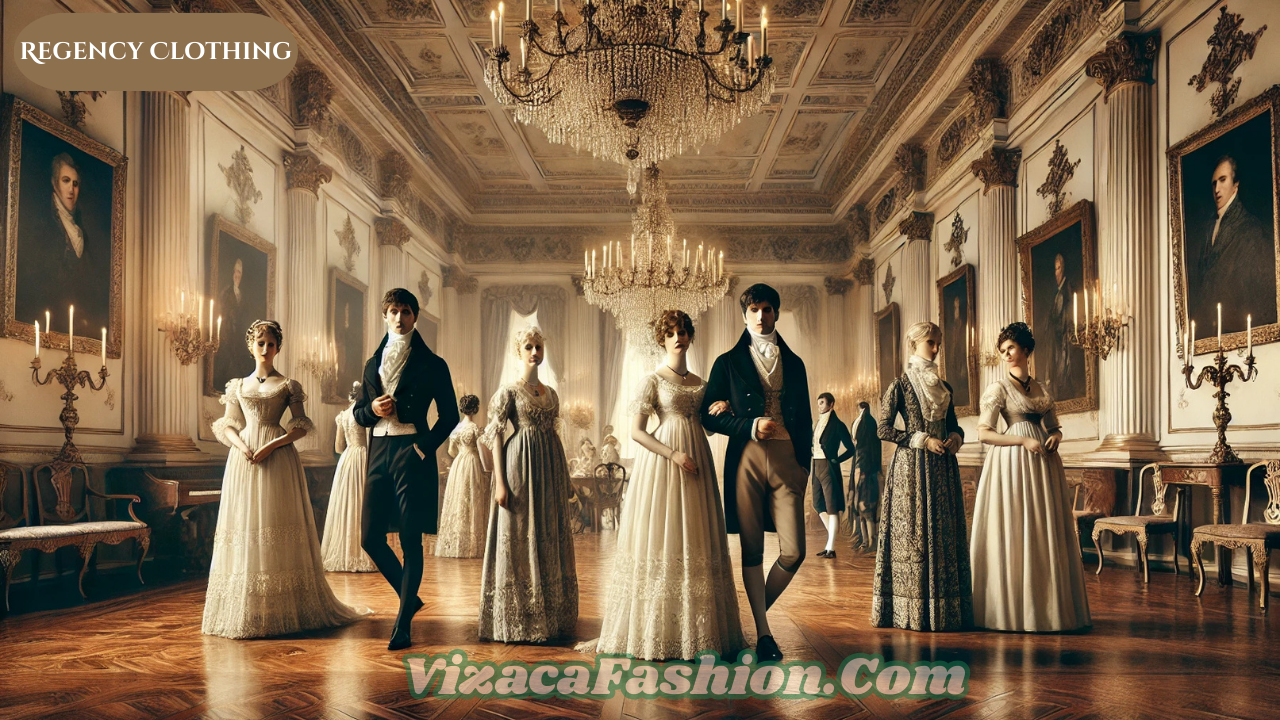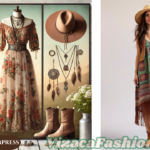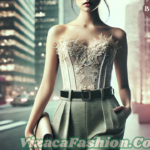The Regency period, spanning from 1811 to 1820, was an era of elegance and refinement in fashion. This period, named after the regency of George IV, introduced a distinct style of clothing influenced by neoclassical ideals. Regency clothing, particularly Regency dresses and Regency era dress styles, was marked by simplicity, delicate fabrics, and a focus on natural beauty. This article explores the characteristics, influences, and legacy of Regency clothing, providing an in-depth look at how fashion evolved during this captivating historical era.
1. The Influence of Neoclassicism on Regency Clothing
Regency clothing was heavily inspired by the classical antiquity of ancient Greece and Rome. Unlike the elaborate and highly structured gowns of the earlier Georgian period, regency dresses embraced simplicity and fluidity. Women’s fashion shifted towards high-waisted gowns, allowing for a more natural silhouette. This transition was largely due to the influence of neoclassical ideals, which celebrated purity, symmetry, and grace.
2. Characteristics of Regency Dresses
The most defining feature of regency dresses was the empire waistline. Positioned just below the bust, this design elongated the wearer’s figure, creating a delicate and graceful look. Other common elements of regency dresses included:
- Lightweight fabrics such as muslin, cotton, and silk
- Short, puffed sleeves or long, fitted sleeves depending on the occasion
- Square, rounded, or V-shaped necklines
- Delicate embroidery, lace, and ribbon details
- Soft, flowing skirts that draped naturally
Unlike the restrictive corsets of previous centuries, regency era dress styles favored looser stays or short corsets that supported rather than constricted the body. This shift made clothing more comfortable while maintaining an air of sophistication.
3. Daywear vs. Eveningwear in Regency Fashion
Women’s regency clothing varied depending on the time of day and the occasion. During the day, dresses were modest and practical. High-necked gowns with long sleeves were common, often paired with spencers (short fitted jackets) or pelisses (long coats). Bonnet hats were a staple accessory, providing protection from the sun and adding a fashionable touch.
Eveningwear, on the other hand, was more elaborate. Low-cut necklines, sheer fabrics, and intricate embellishments adorned these gowns. Women often accessorized with long gloves, delicate jewelry, and elaborate hairstyles, completing the look with a shawl or stole.
4. Regency Era Dress for Men
Although women’s fashion is often the highlight of the Regency period, men’s regency clothing also saw significant changes. Inspired by British dandyism, men’s fashion moved away from extravagant Rococo styles to more structured, tailored looks. Key elements of men’s regency clothing included:
- High-collared shirts with cravats or neckties
- Waistcoats, often embroidered or made of luxurious fabrics
- Tailcoats with a fitted waist and flared skirts
- Breeches or trousers, which gradually replaced knee-length breeches
- Hessian boots or dress shoes
This refined, tailored style remained influential even beyond the Regency era, laying the foundation for modern men’s formalwear.
5. Accessories and Hairstyles in Regency Clothing
Accessories played a vital role in regency clothing. Women adorned themselves with gloves, fans, shawls, and reticules (small handbags). Jewelry was often subtle and elegant, featuring pearls, cameos, and delicate gold designs.
Hairstyles were also an essential aspect of regency fashion. Women styled their hair in intricate updos, often with ringlets framing the face. Men sported short, natural-looking haircuts, influenced by the styles of classical statues.
6. The Legacy of Regency Clothing in Modern Fashion
Regency dresses and regency era dress styles continue to influence modern fashion. The empire waist remains a popular silhouette in contemporary evening gowns and bridal wear. Films and television adaptations of Regency-era literature, such as Jane Austen’s novels, have also revived interest in this timeless fashion.
Moreover, historical reenactments and themed events keep the tradition of regency clothing alive, allowing enthusiasts to experience the elegance of this era firsthand. Many designers draw inspiration from regency fashion, incorporating its delicate details and graceful silhouettes into modern designs.
Conclusion
Regency clothing, with its graceful and timeless aesthetic, remains an iconic representation of early 19th-century fashion. The era’s emphasis on elegance, simplicity, and classical beauty set it apart from both the flamboyant styles of the past and the rigid formality of later periods. Regency dresses and regency era dress styles continue to inspire designers, filmmakers, and history enthusiasts, proving that the elegance of the Regency period is truly everlasting.


